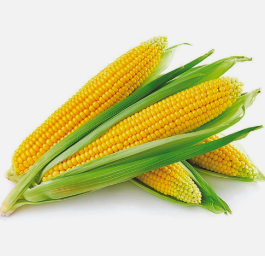
India is celebrated for its rich variety of cereal grains, which are crucial in both its culinary heritage and agricultural methods. These grains, cultivated from grass seeds, are essential staples globally, offering vital nutrients like carbohydrates and proteins. They're utilized in diverse food products such as bread, pasta, and cereals, serving as a cornerstone in both human and animal diets while also playing a pivotal role in global agriculture and economies.

Corn, or maize, is a widely consumed cereal grain originating from the Americas. It has various types like sweet corn, dent corn, and popcorn, each serving different purposes. In cooking, corn can be used fresh, boiled, steamed, grilled, or roasted, adding versatility to dishes such as salads, soups, stews, and tortillas. Processed forms like cornmeal, corn flour, and corn oil are also common in cooking and baking. Apart from its culinary uses, corn is used in animal feed, ethanol production, and various industries. It's prized for its nutritional value, offering carbohydrates, fiber, vitamins, and minerals. Overall, corn is a significant crop with diverse applications in food, nutrition, and industry.

Rice, a staple food in Asia and beyond, offers various varieties like long-grain, medium-grain, and short-grain, each with unique textures and flavors. Rich in carbohydrates, it's a vital energy source. In cooking, rice is versatile: boiled, steamed, or fried, serving as a base for stir-fries, curries, pilafs, and sushi. It's also processed into flour, noodles, and beverages like rice milk. Essential for global food security, rice is integral to diverse cultural cuisines worldwide.

Onions are a widely cultivated and consumed vegetable with a distinctive flavor and culinary versatility. They are used as a key ingredient in numerous cuisines around the world, adding depth and aroma to dishes. Onions come in various types, including yellow onions, red onions, and white onions, each with its own flavor profile and culinary uses. They can be consumed raw in salads, sandwiches, and salsas, or cooked in soups, stews, stir-fries, and sauces. Onions are also valued for their health benefits, as they are rich in vitamins, minerals, and antioxidants.

Green chili commonly known as chili, is a globally favoured spice celebrated for its fiery heat and lively taste. It's a versatile ingredient, adding depth to various dishes like salsas, curries, and stir-fries. Whether fresh, dried, or powdered, green chilies are prized for their ability to enhance flavor. Additionally, they're packed with vitamins and antioxidants, believed to offer health benefits such as improved metabolism and digestion.

Bitter gourd, also called bitter melon or Momordica charantia, is a vegetable known for its distinctive bitterness. Commonly used in Asian and Indian cuisine, it offers numerous health benefits. It can be cooked in various ways like stir-frying, sautéing, or adding to soups and curries. Despite its bitter taste, bitter gourd is prized for its rich nutritional content, including vitamins, minerals, and antioxidants. It is believed to aid in regulating blood sugar, supporting digestion, and enhancing overall health.

Green cluster beans, also called guar beans or gavar, are legumes grown in tropical areas. They have long pods growing in clusters on the plant's stem and are rich in fiber, vitamins C and K, and folate. In Indian cuisine, they're commonly stir-fried, sautéed, steamed, or added to curries and stews, complementing spices and herbs. These beans are valued for their mild, nutty taste and nutritional value.

Cauliflower, part of the Brassica oleracea family, is a versatile vegetable with a compact head of tightly packed florets, available in various colors. It's nutritious, rich in fiber, vitamins C and K, and minerals. In cooking, cauliflower is adaptable: it can be roasted, steamed, boiled, mashed, or consumed raw. Popular alternatives like cauliflower rice and pizza crust cater to low-carb or gluten-free diets. It's used in soups, salads, stir-fries, and as a potato substitute, thanks to its mild taste and seasoning-absorbing qualities, making it a staple in many cuisines.
